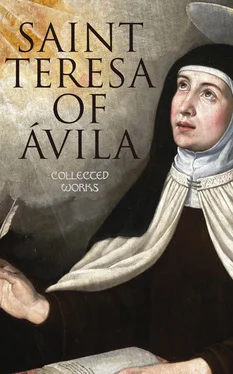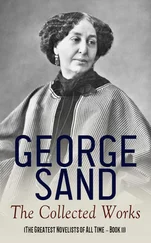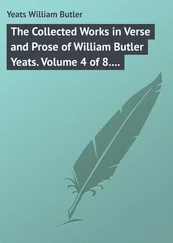This explains the difference of the "Life" such as we know it from the first version or the "Relations" preceding it. Whatever this writing was, it still belonged to the period of her spiritual education, whereas the volume before us is the first-fruit of her spiritual Mastership. The new light that had come to her induced her confessors 25to demand a detailed work embodying everything she had learned from her heavenly Teacher. 26The treatise on Mystical theology contained in Chapters X. to XXI., the investigation of Divine locutions, Visions and Revelations in the concluding portion of the work could have had no place in any previous writing. While her experiences before she obtained the Gift of Wisdom influenced but three persons (one of them being her father), a great many profited by her increased knowledge. 27The earlier writings were but confidential communications to her confessors, and if they became known to larger circles this was due to indiscretion. But her "Life" was written from the beginning with a view to publication. Allusions to this object may be found in various places 28as well as in the letter appended to the book, 29but the decisive utterances must be sought for elsewhere, namely in the "Way of Perfection." This work was written immediately after the "Life," while the Saint was as yet at the convent of St. Joseph's. It was re-written later on and is now only known in its final shape, but the first version, the original of which is preserved at the Escurial and has been reproduced photographically, leaves no doubt as to the intentions of St. Teresa in writing her "Life." "I have written a few days ago a certain Relation of my Life. But since it might happen that my confessor may not permit you (the Sisters of St. Joseph's) to read it, I will put here some things concerning prayer which are conformable to what I have said there, as well as some other things which appear to me to be necessary." 30Again: "As all this is better explained in the book which I say I have written, there is no need for me to speak of it with so much detail. I have said there all I know. Those of you who have been led by God to this degree of contemplation (and I say that some have been led so far), should procure the book because it is important for you, after I am dead." 31At the end she writes: "Since the Lord has taught you the way and has inspired me as to what I should put in the book which I say has been written, how they should behave who have arrived at this fountain of living water and what the soul feels there, and how God satiates her and makes her lose the thirst for things of this world and causes her to grow in things pertaining to the service of God; that book, therefore, will be of great help for those who have arrived at this state, and will give them much light. Procure it. For Father Domingo Bañez, presentado of the Order of St. Dominic who, as I say, is my confessor, and to whom I shall give this, has it: if he judges that you should see this, and gives it to you, he will also give you the other." 32While the first and second of these quotations may be found, somewhat weakened, in the final version of the "Way of Perfection," the last one is entirely omitted. Nor need this surprise us, for Father Bañez had his own ideas about the advisability of the publication of the "Life." In his deposition, already referred to, he says: "It was not convenient that this book should become public during her lifetime, but rather that it should be kept at the Holy Office (the Inquisition) until we knew the end of this person; it was therefore quite against my will that some copies were taken while it was in the hands of the bishop Don Alvaro Mendoza, who, being a powerful prelate and having received it from the said Teresa of Jesus, allowed it to be copied and showed it to his sister, doña Maria de Mendoza; thus certain persons taking an interest in spiritual matters and knowing already some portions of this treatise (evidently the contents of the divulged Relations) made further copies, one of which became the property of the Duchess of Alba, doña Maria Enriquez, and is now, I think, in the hands of her daughter-in-law, doña Maria de Toledo. All this was against my wish, and I was much annoyed with the said Teresa of Jesus, though I knew well it was not her fault but the fault of those to whom she had confided the book, and I told her she ought to burn the original because it would never do that the writings of women should become public property; to which she answered she was quite aware of it and would certainly burn it if I told her to do so; but knowing her great humility and obedience I did not dare to have it destroyed but handed it to the Holy Office for safe-keeping, whence it has been withdrawn since her death and published in print." 33From this it will be seen that Bañez, who had given a most favourable opinion when the "Life" was denounced to the Inquisition (1574), resulting in the approbation by Cardinal de Quiroga to the great joy of St. Teresa, 34returned it to the Holy Office for safety's sake. It was withdrawn by the Ven. Mother Anne of Jesus when the Order had decided upon the publication of the works of the Saint, but too late to be utilised then. Father Luis de Leon, the editor, had to content himself with the copy already alluded to.
St. Teresa wrote her "Life" slowly. It was begun in spring, 1563, 35and completed in May or June, 1565. She complains that she can only work at it by stealth on account of her duties at the distaff; 36but the book is written with so much order and method, the manuscript is so free from mistakes, corrections and erasures, that we may conclude that while spinning she worked it out in her mind, so that the apparent delay proved most advantageous. In this respect the "Life" is superior to the first version of the "Way of Perfection." This latter work was printed during her lifetime, though it appeared only after her death. In 1586 the Definitory of the province of Discalced Carmelites decided upon the publication of the complete works of the Saint, but for obvious reasons deemed not only the members of her own Order but also Dominicans and Jesuits ineligible for the post of editor. Such of the manuscripts as could be found were therefore confided to the Augustinian Father, Luis de Leon, professor at Salamanca, who prepared the edition but did not live to carry it through the press. The fact that he did not know the autograph of the "Life" accounts for the numerous inaccuracies to be found in nearly all editions, but the publication of the original should ensure a great improvement for the future.
St. Teresa's canonisation took place before the stringent laws of Urban VIII. came into force. Consequently, the writings of the Saint were not then enquired into, the Holy See contenting itself with the approbations granted by the Spanish Inquisition, and by the congregation of the Rota in Rome. A certain number of passages selected from various works having been denounced by some Roman theologians as being contrary to the teaching of St. Thomas Aquinas and other authorities, Diego Alvarez, a Dominican, and John Rada, a Franciscan, were commissioned to examine the matter and report on it. The twelve censures with the answers of the two theologians and the final judgment of the Rota seem to have remained unknown to the Bollandists. 37The "heavenly doctrine" of St. Teresa is alluded to not only in the Bull of canonisation but even in the Collect of the Mass of the Saint.
Concerning the English translations of the "Life" noticed by Mr. Lewis it should be mentioned that the one ascribed to Abraham Woodhead is only partly his work. Father Bede of St. Simon Stock (Walter Joseph Travers), a Discalced Carmelite, labouring on the English Mission from 1660 till 1692, was anxious to complete the translation of St. Teresa's works into English. He had not proceeded very far when he learnt that "others were engaged in the same task. On enquiry he found that a new translation was contemplated by two graduates of the University of Cambridge, converts to the Faith, most learned and pious men, who were leading a solitary life, spending their time and talents in the composition of controversial and devotional works for the good of their neighbour and the glory of God." One of these two men was Woodhead, who, however, was an Oxford man, but the name of the other, who must have been a Cambridge man, is not known. They undertook the translation while Father Bede provided the funds and bore the risks of what was then a dangerous work. As there existed already two English translations of the "Life," the first volume to appear (1669) contained the Book of Foundations, to which was prefixed the history of the foundation of St. Joseph's from the "Life." When, therefore, the new translation of the latter appeared, in 1671, this portion of the book was omitted. 38The translation was made direct from the Spanish but "uniformly with the Italian edition."
Читать дальше












